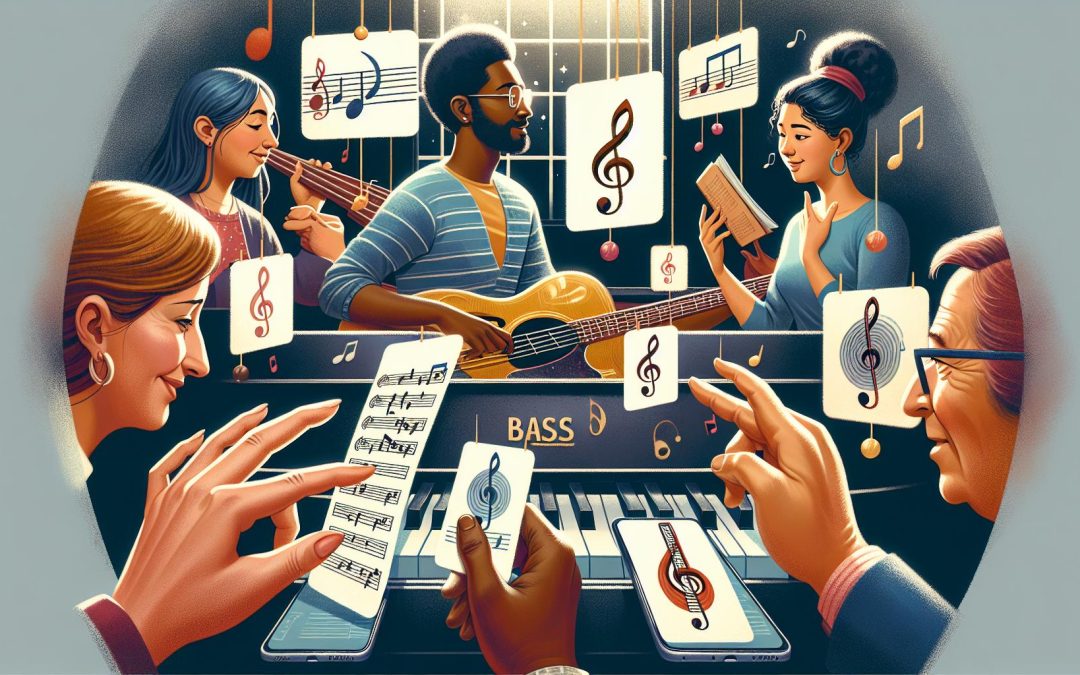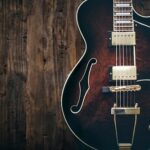Learning to read music, especially bass clef notes, can feel like deciphering an ancient code. But what if there was a simpler way to crack it? Good news: there is! With a few clever tricks and mnemonic devices, anyone can master the bass clef notes without breaking a sweat.
Imagine being able to glance at a piece of music and instantly knowing what notes to play. It's not just a dream. By breaking down the bass clef into easy-to-remember chunks, musicians of all levels can quickly boost their reading skills. Let's dive into the easy ways to remember those elusive bass clef notes and make music reading a breeze.
Understanding the Bass Clef
The bass clef, also known as the F clef, is a fundamental element of music that appears mysterious to many beginners. Its purpose is to indicate where the note F is on the bass staff, sitting on the fourth line from the bottom. This clef is most commonly used for lower-pitched instruments and voices, such as the cello, trombone, bassoon, and male vocals. Mastering its notes can seem daunting at first, but with the right approach, it becomes a straightforward task.
One of the keys to unlocking the bass clef's secrets is to visualize its unique symbol, which resembles a backward C with two dots on either side. These dots are positioned around the F line to serve as a reminder of where it lies. While the treble clef gets a lot of attention for its use in higher-pitched music, the bass clef is equally essential for those focusing on the lower end of the musical spectrum.
Mnemonic devices have proven to be an effective tool for memorizing the lines and spaces of the bass clef. For the lines, which represent the notes G, B, D, F, and A, a popular mnemonic is "Great Big Dogs Fight Animals." For the spaces, which correspond to the notes A, C, E, and G, the phrase "All Cows Eat Grass" is commonly used. These phrases, though simple, pack a powerful punch in embedding the note sequence into a musician's memory.
Beyond mnemonics, practical exercises play a crucial role in familiarizing oneself with the bass clef. Reading music is a skill that improves with practice, much like learning a new language.
- Start Small: Begin by identifying single notes and gradually work up to reading simple melodies.
- Practice Regularly: Dedicate at least a few minutes each day specifically to reading bass clef music.
- Use Flashcards: Create or purchase flashcards that feature different bass clef notes for quick recognition practice.
- Play and Repeat: Play pieces that utilize the bass clef extensively. Repetition is key to internalizing the notes.
- Software and Apps: Take advantage of technology by using apps designed to teach music reading skills. Many of these are interactive and adjust to the learner's pace.
Mnemonic Devices for Bass Clef
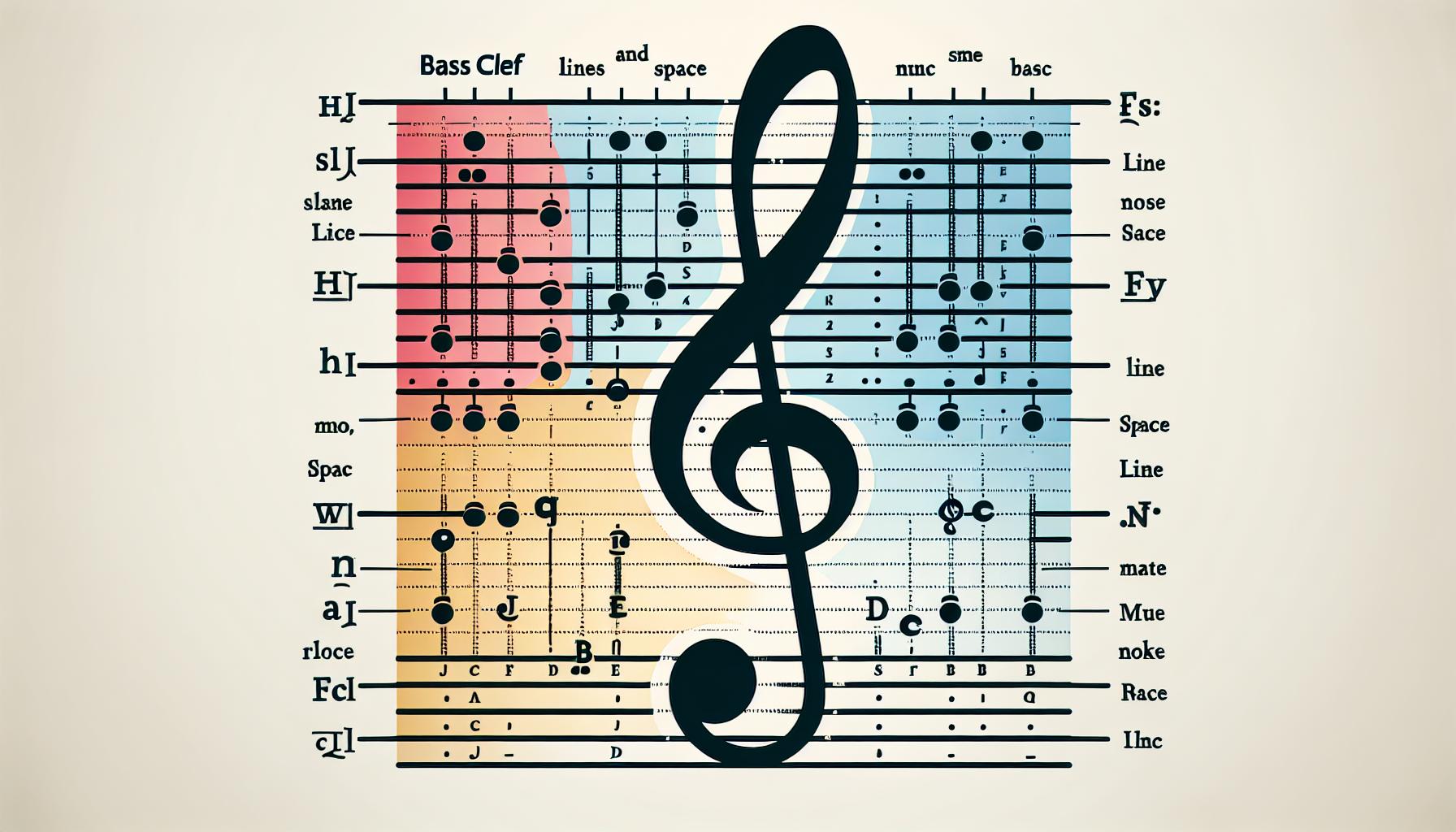
Mnemonic devices are fantastic shortcuts for memorizing complex information, and they're especially useful when learning to read music in the bass clef. By associating each line and space with a word or phrase, students can quickly recall the notes with ease. Let's delve into some of the most effective mnemonic devices tailored for the bass clef.
Lines of the Bass Clef
The lines on the bass clef, from bottom to top, represent the notes G, B, D, F, and A. An easy way to remember these notes is through the phrase "Great Big Dogs Fight Animals". Each first letter of the word corresponds to the notes in ascending order. Here’s how it breaks down:
- Great
- Big
- Dogs
- Fight
- Animals
Not only is this phrase simple to recall, but it also creates a vivid image, making it a sticky memory.
Spaces of the Bass Clef
The spaces, likewise, spell out a word on their own - A, C, E, G. To remember these, music learners often use the phrase "All Cows Eat Grass". It’s straightforward and effectively represents the notes:
- All
- Cows
- Eat
- Grass
For some, visualizing cows leisurely munching on grass helps solidify the association between the space's notes and their placement on the staff.
Additional Mnemonic Strategies
Apart from these traditional phrases, learners can devise their own mnemonic devices that resonate personally with them. Some might prefer whimsical phrases or even personal anecdotes tied to each note. The key is finding a mnemonic that's both memorable and meaningful to the individual.
Using Mnemonic Devices in Practice
To solidify these mnemonics, it's essential to apply them in context. Start by identifying single notes on the bass clef using the mnemonic phrases, then gradually increase complexity by reading simple melodies. Implementing mnemonic devices in regular practice sessions enhances their effectiveness and, over time, reading bass clef notes becomes second nature.
Acronyms for Bass Clef Notes
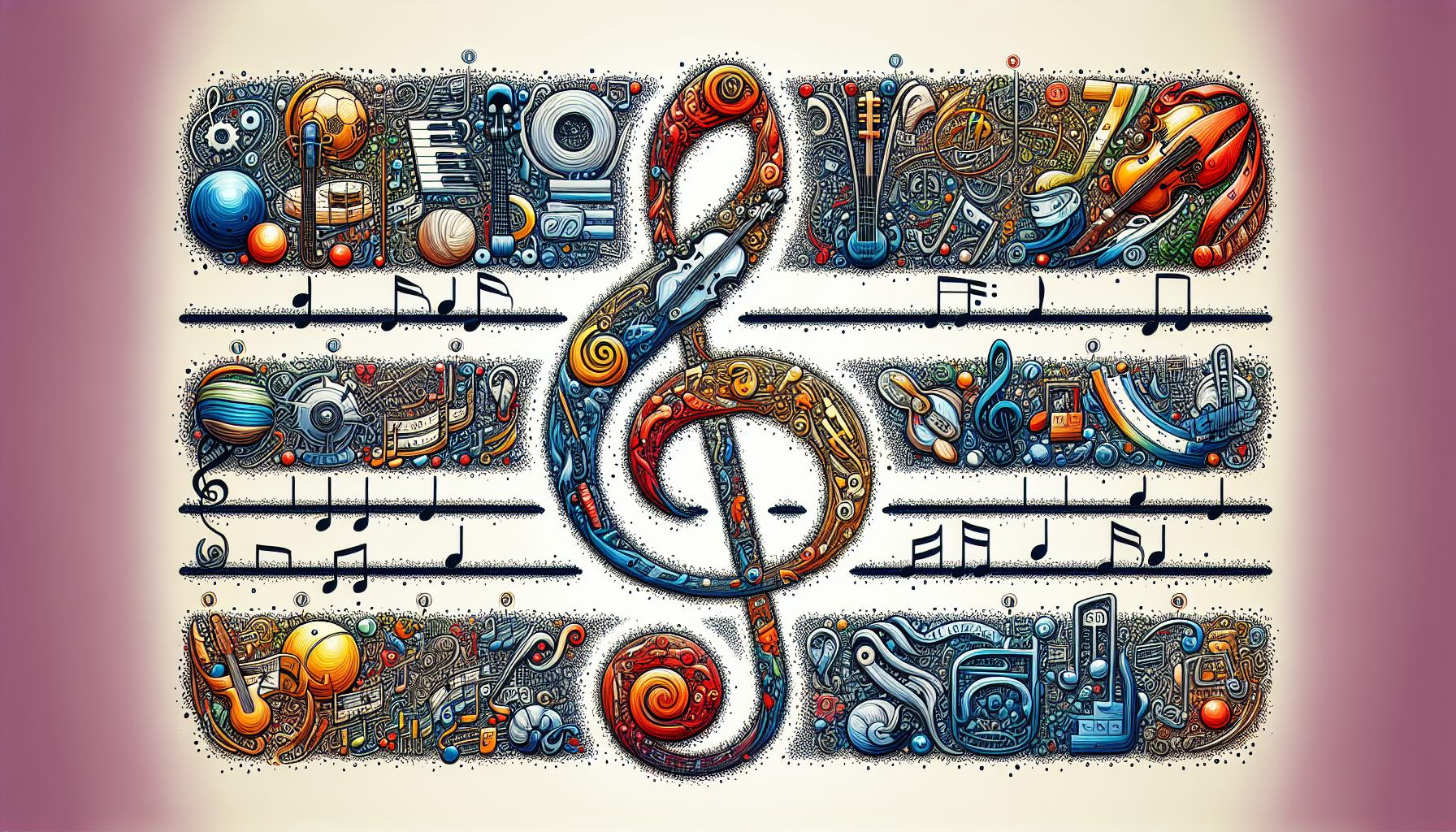
In the quest to master the bass clef, musicians often turn to acronyms as a powerful tool. These clever, memorable phrases can make the difference in how quickly and effectively someone can recall the notes. Let's delve into some of the most popular and inventive acronyms used.
"Great Big Dogs Fight Animals" and "All Cows Eat Grass" are foundational acronyms that have helped countless beginners. The first represents the notes on the lines of the bass clef—G, B, D, F, and A—while the second refers to the spaces between those lines—A, C, E, and G. By associating each note with a vivid image or concept, learners can more easily navigate the bass clef's landscape.
But the creativity doesn't stop there. Personalizing these mnemonics to fit individual interests or humor can significantly enhance their effectiveness. For example, a coffee lover might use "Good Beans Deliver Fantastic Aromas" for the lines, while a nature enthusiast might prefer "All Creatures Enjoy Green" for the spaces. The key is to create something that's both easy to remember and meaningful to the individual.
Practicing with these acronyms isn't just about memorizing them in isolation. They become truly powerful when combined with active application. This means sitting down with sheet music and using the mnemonic devices to read notes in real-time. Initially, this might slow down the process, but with patience and persistence, it leads to a much stronger and more intuitive understanding of the bass clef.
Moreover, educators and music tutors can play a significant role in making these acronyms stick. Interactive games, quizzes, and challenges that incorporate these mnemonic devices can make learning both effective and fun. Whether it's a classroom setting or one-on-one lessons, the playful application of acronyms can transform what might otherwise be a tedious task into an engaging and memorable experience.
Additionally, the advent of digital learning tools has provided new opportunities for leveraging these acronyms. Many apps and online platforms include games and exercises designed specifically to reinforce note recognition in the bass clef using mnemonic devices. These tools often allow for customizable experiences, encouraging users to input their acronyms and share them with a community of learners. This communal aspect of learning not only fosters a supportive environment but also exposes users to a wide array of mnemonic strategies.
Practice Tips for Mastering Bass Clef
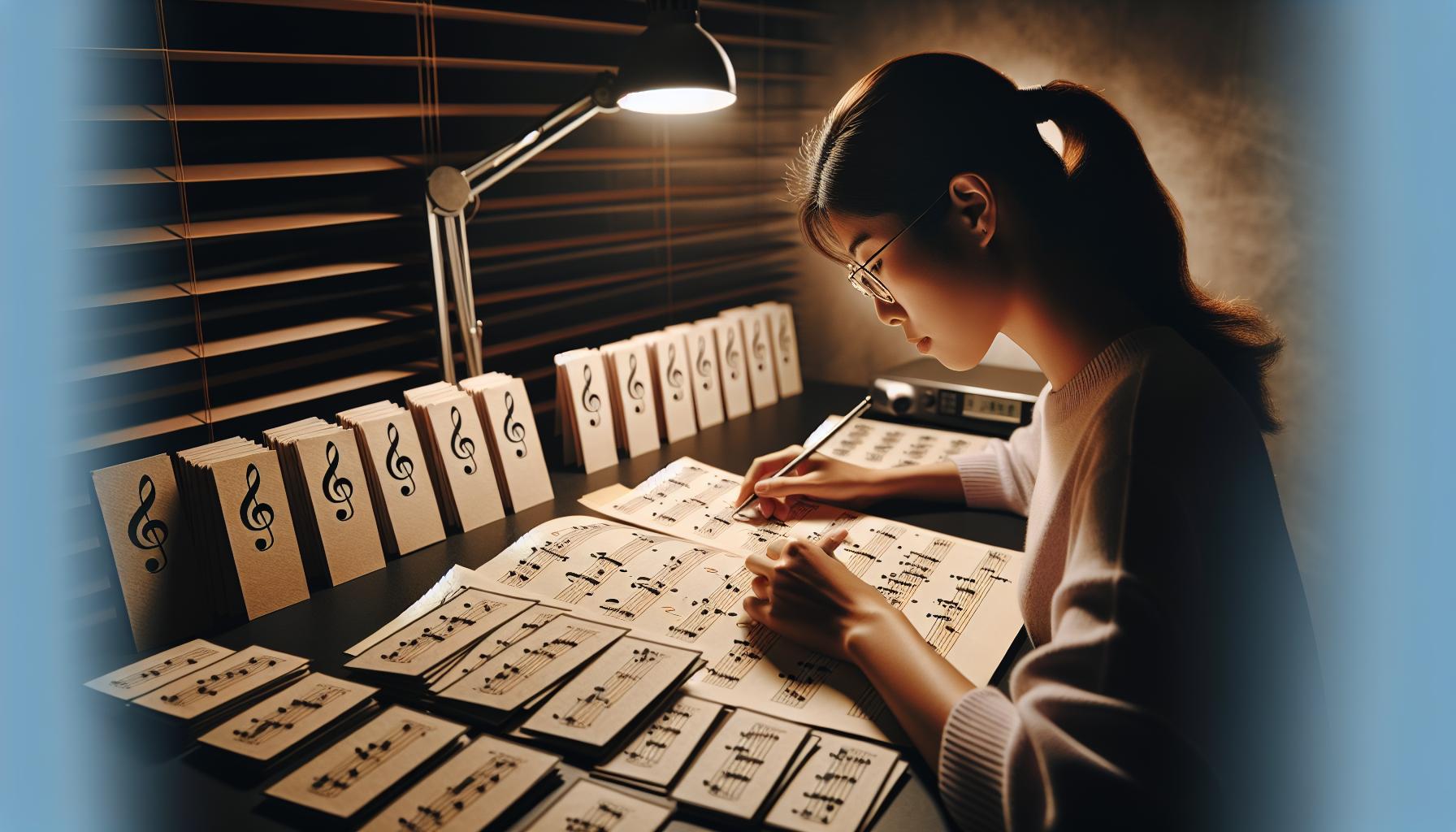
Mastering bass clef notes is like learning a new language. It requires regular practice and a methodical approach. Here are some practice tips that can help musicians, both beginners and seasoned players, navigate bass clef notes with ease.
Start Small and Build Gradually
Initially, focusing on a few notes at a time can prevent feelings of overwhelm. Begin with the bottom line (G) of the bass clef and work up to the top line (A), using mnemonic devices like "Great Big Dogs Fight Animals." Once comfortable, they can add more notes in sequences that make musical sense, such as scales.
Utilize Flashcards for Memorization
Flashcards are a timeless tool for efficient memory recall. They can create a set of flashcards, with one side showing the note on the staff and the other side the letter name. This method forces active recall, proven to enhance memory. Flipping through these cards daily can significantly improve note recognition speed.
Incorporate Technology
There's a plethora of apps and software designed for music education. These digital tools often feature interactive exercises that adjust to the user's proficiency level, making learning both fun and effective. Some apps also allow users to customize their practice sessions, focusing on areas that need the most attention.
Practice with Real Music
Applying knowledge to actual music pieces can be highly rewarding. They should start with simple songs and gradually tackle more complex pieces. This approach helps in understanding how notes work together to form melodies and harmonies. Sight-reading new pieces regularly can also boost their confidence and sight-reading skills.
Engage in Regular Ear Training
Recognizing notes by ear is an invaluable skill for any musician. Incorporating ear training exercises into practice sessions can improve their ability to identify notes, chords, and intervals without looking at the music. This skill not only aids in memorization but also enhances overall musicality.
Join a Community or Ensemble
Learning in a group setting can be incredibly motivating. Joining a music ensemble or an online community provides opportunities to share tips, receive feedback, and practice together. This social aspect of learning can make practice sessions more enjoyable and less isolating.
Conclusion
Mastering bass clef notes opens up a new world of musical expression and understanding. By starting small, using clever memory aids, and gradually expanding knowledge, anyone can become proficient. The journey to learning doesn't have to be a solo one—flashcards, technology, and community support play crucial roles in making the process not just effective but also enjoyable. So grab your instrument, dive into the music, and let the notes guide you to a deeper musical connection. Remember, every great musician started somewhere, and with these strategies, you're well on your way.
Harlan Kilstein began playing piano during covid with no piano background at all. He taught himself how to play learning what to do and what not to do.
Today he's an advanced intermediate player and can help you grow in your skills because he learned all this on his own.

